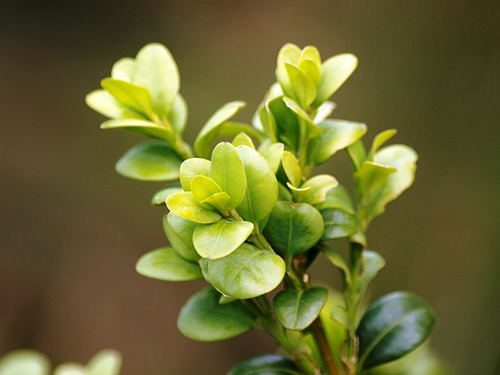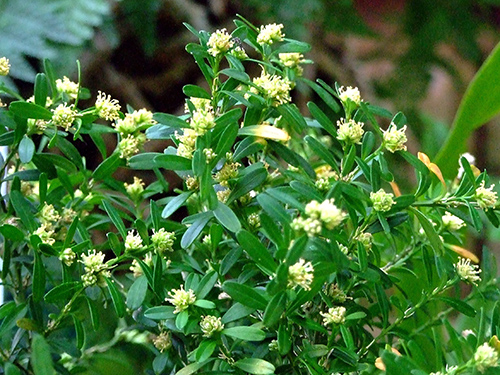Contents
The boxwood plant was once used to combat malaria as a substitute for quinine, a substance native to South America and not always available in Europe. However, its use as a medicinal herb has decreased because of its toxicity.

Boxwood Plant Scientific Facts
- Scientific name: Buxus sempervirens L.
- Other names: Box Tree.
- French: Buis.
- Spanish: Boj.
- Environment: Common in mountainous areas of Central and Western Europe, it also grows along the Atlantic coast of North America and, with less frequency, in mountainous regions of South America.
- Description: Shrub of the Buxaceae family, growing from one to two meters high, with small, evergreen, oval, and bright leaves and small, yellowish flowers.
- Parts of the plant used medicinally: The leaves and the root bark.

Healing Properties and Warning
The entire plant, mainly its leaves and the root bark, contains four steroid alkaloids, of which buxen is the most active. Moreover, boxwood contains essential oil, resin, tannin, and vitamin C.
The plant has sudorific, febrifuge, and mild cholagogue properties. Boxwood has been used for fever diseases (influenza and malaria) and gall bladder disorders. Its intense febrifuge action can be helpful when other remedies fail. A decoction of boxwood leaves, applied as a lotion on the scalp, can sometimes make hair grow again.

WARNING! Never exceed the recommended dose. When taken in high doses, it can cause vomiting and nervous disorders. We recommend that you avoid using it when there is low blood pressure, weakness, pregnancy, or breastfeeding. Never give it to children.
How to use Boxwood
- Decoction with 30-40 g of leaves and/or root bark per liter of water. Drink up to three cups daily, sweetened with brown sugar, molasses, or honey.
- Lotions. With a concentrated decoction of leaves (80-100 g per liter of water).
DISCLAIMER: All content on this website is presented solely for educational and informational objectives. Do not rely on the information provided as a replacement for advice, diagnosis, or treatment from a qualified medical expert. If you are pregnant, nursing, or have any preexisting medical concerns, talk to your doctor before using any herbal or natural medicines.
REFERENCES
- George D. Pamplona-Roger, M.D. “Encyclopedia of Medicinal Plants.” George D. Pamplona-Roger, M.D. Encyclopedia of Medicinal Plants. Ed. Francesc X. Gelabert. vols. 2 San Fernando de Henares: Editorial Safeliz, 2000. 748. Print. [boxwood plant]
- PubMed (peer-reviewed medical articles): https://pubmed.ncbi.nlm.nih.gov/
